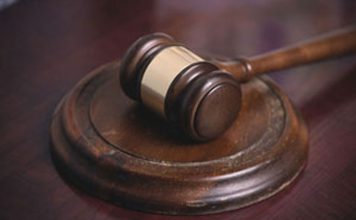Public drunkenness arrests in Morgan Hill doubled in the past
two years. While the majority of these arrests were not coupled
with arrests for other crimes, police said making these arrests is
a way to curb violence and prevent other crimes.
MORGAN HILL
Public drunkenness arrests in Morgan Hill doubled in the past two years. While the majority of these arrests were not coupled with arrests for other crimes, police said making these arrests is a way to curb violence and prevent other crimes.
There were 161 people arrested by Morgan Hill police for violating the state of California’s public drunkenness statute in 2008 – which amounts to about 7 percent of the city’s total arrests last year, according to city figures. That jumped from 112 arrests in 2007 – about 4.5 percent of the city’s arrests – and 93 arrests in 2006.
Chief Bruce Cumming attributes the increase to having more resources in the department, and better enforcement by officers who have responded to more violent crimes in recent months that were often fueled by alcohol.
“Our officers are more assertive about (public drunkenness) than perhaps they were three or four years ago,” said Cumming. “At some bars we’ve had some very serious violence, and this is a very simple and appropriate way to deal with violence.”
Yet, in only 26 of 161 cases last year were those arrested for public drunkenness also arrested for another crime, according to figures from the District Attorney’s office – which receives all cases of public drunkenness in which the suspect is accused of other crimes, according to D.A. spokeswoman Amy Cornell. This is only a slight increase over 2007, when 14 out of 112 public drunkenness arrests in Morgan Hill involved additional crimes.
By comparison, Gilroy Police arrested 317 people for being drunk in public by Nov. 30 last year, Sgt. Jim Gillio said, putting it on pace to arrest 346 people. In 2007, police arrested 311 people. That’s about 9 percent of total arrests, up from 7 percent in 2006 when 256 people were arrested.
In addition, 91 of Gilroy’s 317 arrests in 2008 involved another crime, according to figures from the District Attorney’s office. This is a marked increase over 2007, when 33 arrests involved other crimes.
The state statute, 647(f) of the California Penal Code, says that officers can arrest anyone in public who is under the influence of alcohol or drugs and as a result is “unable to exercise care for his or her own safety or the safety of others … or obstructs or prevents the free use of any street, sidewalk, or other public way.” So those arrested for public drunkenness, a misdemeanor, are not always acting violently.
Cumming said taking drunks off the streets can prevent self-inflicted injury, impaired driving and other crimes before they happen. He said there have been some incidents in which intoxicated people have been taken immediately to the hospital with serious cases of alcohol poisoning.
Public drunkenness arrests lit up a controversy in the city of San Jose in October, when police officers there were accused of overzealous enforcement of the statute. One ongoing complaint is that the law does not require police to use an objective standard, such as field sobriety tests or a breathalyzer test, to determine if someone is drunk. The San Jose police are facing a federal civil rights lawsuit that accuses them of using the law to arrest people who committed no crime and were not intoxicated.
Morgan Hill Police Sgt. Jerry Neumayer said officers are trained to identify heavily intoxicated people just by observing them. Usually what triggers an arrest are the more obvious signs, such as stumbling, slurred speech, lying down on a sidewalk or urinating on oneself, Neumayer said. And if a drunk person is destroying property or threatening others, they can be charged with multiple crimes.
Cumming said after San Jose police were accused of unfair use of the law, Morgan Hill police conducted an internal review of its public drunk arrest activity. In the 20 local cases randomly chosen for review, “We’re convinced the officers acted appropriately,” Cumming said.
Most of Morgan Hill’s public drunkenness arrests occur in the areas near Tennant Station and downtown, where bars and other establishments that allow alcohol consumption on site are concentrated, according to Neumayer. And most of them happen late at night.
A man who appeared to be “extremely drunk” and fell down repeatedly while trying to walk on Monterey Road near the Holiday Motel in December was one such arrest, according to police reports. Another example was when, in November, police arrested a 20-year-old intoxicated man who had been seen lying on the ground naked and screaming near Barrett Avenue.
Jackie Jimenez, a bartender at Strixe Lounge at Tennant Station – which draws a late-night crowd – said Strixe staff is aware of the potential danger that can happen when patrons leave in an inebriated state. Jimenez said she has regularly cut off customers who have had too much to drink, but it is difficult to keep an eye on everybody, especially on weekends when larger crowds are there.
She also noted that the bar will gladly call a taxi cab or arrange a ride for people who are unable to drive back home.
“It’s just not worth it,” said Jimenez.
Strixe has been the site of violent incidents in the recent past, but police have said those crimes were related more to gang affiliations than alcohol use.
Neumayer said typically when a drunk person is arrested in Morgan Hill, they are transported to the police station on Vineyard Boulevard and locked in a cell until they are sober enough to take care of themselves. Usually that takes no longer than six hours, when they are released and issued a citation with a court date.
Gilroy police usually handle public drunk arrests similarly.
The maximum penalty for a public drunkenness conviction is six months in county jail or a fine of $1,000, according to Carl Schulhof, spokesman for the Santa Clara County Superior Court. However, information presented to the Santa Clara County Board of Supervisors in December showed the maximum penalty is rarely imposed for first-time offenders.
In response to the controversy in San Jose, the Board of Supervisors requested a study on the impact of the public drunk arrest volume on the criminal justice system as a whole. That study found that in 2007, about 8 percent of all arrests made by the county’s various law enforcement agencies were for suspicion of public drunkenness. Yet, more than half of those were dismissed in court.
The study noted that many of the public drunk arrests are “attitude arrests,” because they occur after a negative interaction between an individual and police.
“The courts are unnecessarily impacted by this,” said County Public Defender Mary Geenwood. “The integrity of the justice system is placed at issue when groundless charges are brought to the court.”















